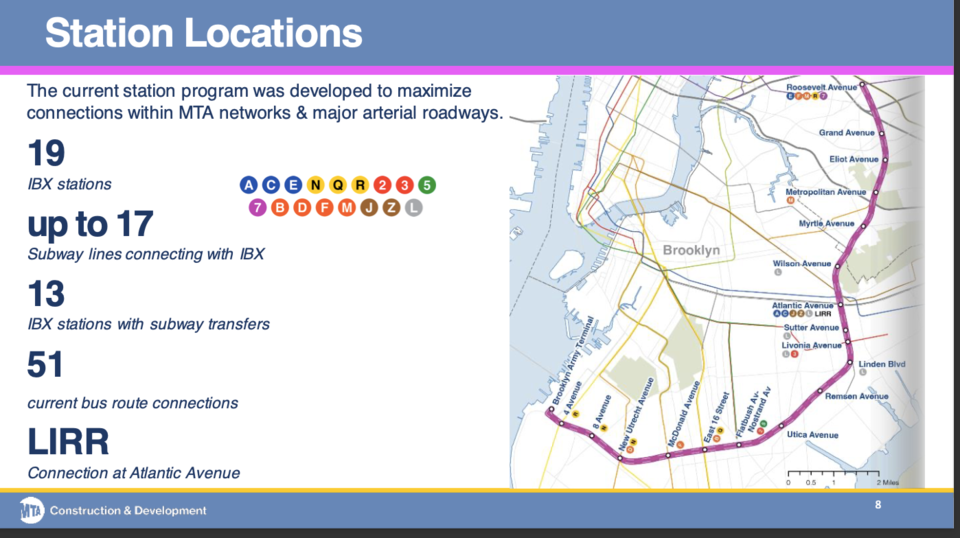The Interborough Express (IBX) is a new rapid transit project that the Metropolitan Transportation Authority (MTA) is planning. The line would connect with up to 17 different subway lines in Brooklyn and Queens, as well as Long Island Rail Road. Although Broadway Junction is one of the busiest transfer stations in Brooklyn, the MTA does not plan to build an IBX station there. Instead, many transferring IBX riders would have to walk about a quarter mile from or to the IBX station at Atlantic Avenue.
The IBX line would run through the existing East New York freight tunnel, beneath a playground next to the existing Broadway Junction station entrance building. One obstacle to building an IBX station there is that one of the four tubes of that tunnel is used by two small (approx. 12-inch) pipes of the Buckeye Pipeline that carries jet fuel to John F. Kennedy Airport. Because the MTA’s consultants considered that tube unavailable for IBX use, they proposed adding a new tunnel for a southbound IBX track and a southbound station platform, but the MTA dropped that idea because it would cost over a billion dollars.
But there is a better solution: Relocate the pipeline.
As shown in the aerial view below (from Google Maps), Broadway Junction is served by the A, C, J, L and Z subway lines and several bus routes on the adjoining street. An MTA report in 2022 projected that, if an IBX station were built there, it would be the busiest IBX station, with 95% of the projected IBX activity being transfers with other bus and subway lines.
Today, riders can enter the station from Van Sinderen Avenue, which parallels the Canarsie L line. Bus stops are located near the entrance. The Fulton Street A and C lines run east-west (right-left in the aerial view) beneath the entrance building. The East New York freight tunnel (where the IBX line would run) runs generally north-south below the playground, west of the entrance building (left of the aerial view).
The entrance building is connected by an enclosed passageway, including stairs and escalators, rising up and over Truxton Street to the mezzanine of the elevated structure. The Broadway line J & Z platforms are below the mezzanine and the Canarsie line L tracks are above the mezzanine.
The MTA’s consultants apparently understood that two tubes of the East New York freight tunnel would be required for IBX tracks, one for a freight track and one for the pipeline. That would leave no room in the existing four tubes for an IBX station platform. To provide an IBX station at Broadway Junction, they proposed that existing tube 1 be used for northbound IBX tracks, tube 2 for a northbound station platform, tube 3 for freight and tube 4 for the pipeline, where its two pipes are now located. A new, deeper, 1.8 mile-long tunnel would be built to handle the southbound IBX track and a southbound platform at Broadway Junction. In this scenario, the southbound platforms at the Atlantic Avenue and Wilson Avenue IBX stations would also have to be underground, increasing the expense.
Clearly, an IBX station at Broadway Junction is highly desirable, preferably with elevators and escalators connecting to existing transit line platforms. It would appear to be much easier and less expensive to relocate two pipes than to build a new rail tunnel to enable construction of that station.
Brooklyn and Queens transit riders deserve an IBX station at Broadway Junction.
John Pegram, a Brooklyn resident and lawyer, writes about transit and rail freight proposals for Brooklyn and Queens and especially the Interborough Express at https://bqrail.substack.com.This article expresses the personal views of the author and does not express the views of his employer, or any client or organization.




